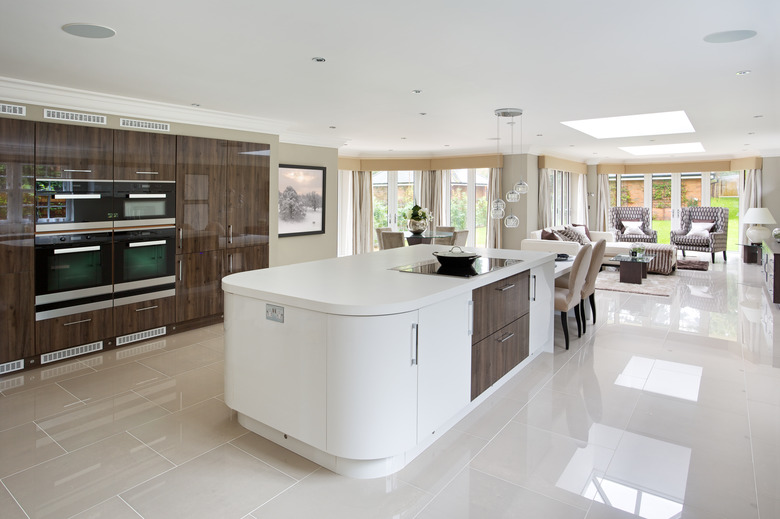Pros & Cons Of Acrylic Countertops
One of the biggest choices you'll make in a kitchen or bathroom is the surface material for countertops. There is a world of options, like stone and quartz, zinc and concrete, laminate and a product that revolutionized kitchens back in 1967: acrylic solid-surface material.
When DuPont unleashed Corian-brand countertops on the homeowners of America, it was a game changer. Today, with over a half century of product, reinforced acrylic composite countertops are available in a stunning variety to suit any home décor.
What Is an Acrylic Countertop?
What Is an Acrylic
Countertop?
Sometimes, acrylic gets a bad rap as the "plastic" countertop, but the reality is that it's only about 33 percent resin based, and the rest is mineral component, hence the reinforcing. For three decades, DuPont held a patent on solid-state acrylic countertops, but when the patent lapsed, the market flooded with competition.
Today, these solid-state countertops are made by a wide variety of manufacturers, including Staron (owned by Samsung). Even kitchen mainstay Formica has gotten in on the act. This means there have been numerous advances in the technology, quality and appearance of this versatile product. Some of these makers are seeking more environmentally friendly compositions too.
The Pros of Acrylic Countertops
The Pros of Acrylic
Countertops
Saving money isn't necessarily part of the equation with acrylic countertops, as they can still be expensive. Part of what you're getting in that price is how resilient, strong and versatile the product is. With the ability to customize acrylic countertops for your space plus invisible seams, they make bathrooms, workshops and kitchens look stunning.
Most importantly, acrylic is safe for food and is rated excellent for hygiene since it's nonporous, and its seamlessness increases that safety. It's easy to clean and maintain and doesn't need sealing like stone products often do.
That's why most of these products have warranties that start at around 10 years and go up to over 20 years. Most brands require that their certified installers do the work on the countertop to get these long warranties, but not all do, so investigate that if DIY is in your plans.
The best part of acrylic countertops is that they're kind of the hardwood floor of the countertop world. That is to say, if you get a spot of damage from chipping or a bit of a burn, a certified installer can probably sand out damage and buff the surface so it looks almost like new. They're stain resistant, and they repel both mold and moisture. They don't need sealing or other intensive care as the years pass.
Accessorizing With Acrylic
Accessorizing With Acrylic
What really sets acrylic countertops apart is reinforced acrylic composite, which is what allows consumers to purchase accessories like kitchen sinks that are a complete match to the counter surface. So, if you love a cohesive design, it's possible to have a seamless counter with a sink, drainboard and backsplashes that exactly duplicate the counter's style and color.
When talking bathrooms and mixing an acrylic composite sink with an acrylic vanity top's durability, homeowners can rest easy knowing their cabinetry is being well-protected from moisture from the top down.
The Downsides of Acrylic Countertops
The Downsides of Acrylic Countertops
Acrylic countertops look fantastic and usually come with great warranties of a decade or more, but that tends to only be the case when professionally installed by a pro who is certified by that brand. For some more ardent DIYers, that can be a bit frustrating, but if they want the warranty, that's the sticking point.
While these are tough, long-lasting counters, their one weakness is hot pots and pans. The fact that a burn mark can be buffed out shouldn't mean being complacent about setting down hot stuff. The counters have been known to discolor patches and make seams rise up, and neither of those flaws can be fixed by sanding and buffing.
